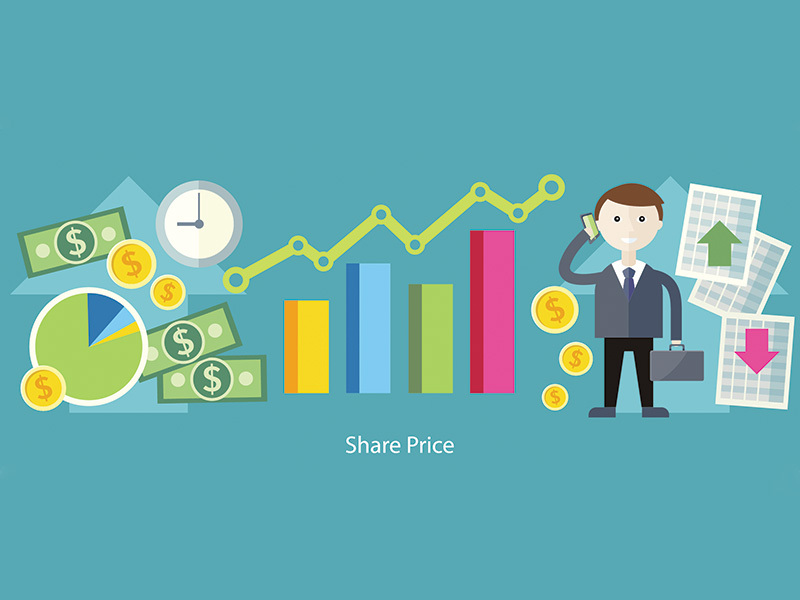
There are multiple investment options available to investors in today’s market. Investors can select from these options based on their risk return analysis or their investment strategy. Among the many types of investment available, ETFs and FOFs are gaining a huge market over the years. This makes it important for the investors to get basic information or know about the basic differences between them.
What is an ETF?
ETFs are Exchange Traded funds that are a pool of securities like mutual funds. The fundamental difference between mutual funds ETFs is that ETFs can be traded in the market during market hours like any individual stock. Mutual funds do not have this benefit and are traded at the end of the day at the closing price. ETFs have the benefit of simply replicating the performance of the underlying index. The fund managers do have the pressure of outperforming the index to generate higher returns for the investors.
What is FoF?
Fund of funds on the other hand are mutual funds that invest in other mutual funds instead of individual stocks or assets. The fund manager of a fund of funds manages a portfolio of mutual funds that are curated specifically to match the investor profile. Fund managers can invest in the fund of the same fund house or different fund houses that may be within the country or outside. Investment in a fund of funds meets the diversification needs of the investor in an ultimate manner as it provides diversification in the form of not only individual stocks but also different securities, assets, sectors, markets, or industries.
Differences between FOF and ETF
To make sound investment decisions, it is necessary for the investors to know about the key difference between ETFs and FOFs. This will help the investors in making a better investment portfolio.
Given below are some of the basic differences between ETFs and FOFs.
Ease of Investment
ETFs can be traded in the open market for which the investors need to have a Demat account and a trading account. Investment in a fund of funds does not need any such trading account or Demat account. Investors can simply rely on the fund managers for making investment decisions.
Expense ratio
The expense ratio of an investment is an important factor in deciding among the investments. The cost of investing in ETFs is usually lower than that of investing in FoFs. FoFs are actively managed funds while ETFs are considered to be passively managed funds. Hence the cost or the expense ratio is higher in the case of FoFs as compared to ETFs.
Taxation
The taxation of the ETFs is twofold i.e., tax on dividends received for securities held under the ETFs (taxed at applicable slab rates of investors) as well as capital gains on the sale of ETFs. The capital gains on ETFs can be explained in the table below.
| Types of ETFs | Short term capital gains | Tax rate | Long term capital gains | Tax rate |
| Equity ETFs | Maximum 12 months | 15% (plus Cess) under section 111A | 12 months and more | 10% (plus cess) on gains exceeding Rs. 1,00,000 |
| Other ETFs (Debt ETFs, Gold ETFs, International ETFs) | Maximum 36 months | Slab rates | 36 months and more | 20% with the benefit of indexation |
FoFs on the other hand are taxed in line with mutual funds based on their asset orientation. It can be explained through the table given below.
| Type of funds | Short term gains | Tax rate | Long term gains | Tax rate |
| Equity Oriented fund (investment in equity more than 65% of the fund) | Less than 12 months | 15% (plus cess and surcharge) | 12 months and more | Exempt up to Rs.1,00,000Above Rs.1,00,000 taxed at 10% (plus cess and surcharge) |
| Debt oriented fund (investment in Debt more than 65% of the fund) | Less than 36 months | Slab rate of investor | 36 months and more | 20% (plus cess and surcharge) |
| Hybrid equity oriented funds | Less than 12 months | 15% (plus cess and surcharge) | 12 months and more | Exempt up to Rs.1,00,000Above Rs.1,00,000 taxed at 10% (plus cess and surcharge) |
| Hybrid debt oriented funds | Less than 36 months | Slab rate of investor | 36 months and more | 20% (plus cess and surcharge) |
Liquidity
ETFs can be easily traded in the open market which makes them highly liquid as compared to FoFs. FoFs do not have this benefit so their liquidity is lower than ETFs.
Factors to be considered while choosing ETFs of FoFs
ETFs and FoFs are both attractive investment products having their own set of pros and cons. However, an investment in either of the products depends on many factors that have to be considered by the investors. Some of such factors are discussed below.
Investor’s objective
The objective of the investor is crucial to determine an investment between ETFs or FoFs. If the investor is looking for active trading or short-term investments, ETFs are more suitable for such investors. On the other hand, an investor looking for higher diversification or increasing their wealth through long-term investments may prefer FoFs against ETFs.
Risk appetite
The risk-return ratio is crucial for any decision making in relation to investments. ETFs are inherently considered to be lower risk products in comparison to FoFs since they simply replicate their underlying index with minimal errors (known as tracking errors). FoFs on the other hand are actively managed funds where the risk is higher which may or may not translate into higher returns.
Investment budget
Investment budget is another constraint affecting investment decisions. If the investor has a sufficient budget they can tap into both ETFs and FoFs and have the benefit of both the products. However, in the case of a limited investment budget, investors will have to act prudently and invest in the product that meets their investment objective or returns expectations.
Influence of fund managers
The influence of fund managers is high in determining the performance of FoFs. These FoFs not only depend on the expertise of the fund’s manager but also on the fund managers of the underlying funds. ETFs do not have such high dependence fund managers as their performance is directly dependent on the performance of the index.
Conclusion
ETFs and FoFs both have the potential to increase the investors’ wealth over time. Hence, the decision to invest in ETFs or FoFs is ultimately dependent on the risk appetite and the returns expectations of the investors along with taking into consideration the investment horizon as well as the cost of investment. In short, it is a simple cost-benefit analysis that is ultimately the driving force in deciding between ETFs and FoFs.
FAQs on ETFs vs FoF
1. Is it mandatory to open a Demat account and a trading account for investing in a fund of funds?
No. Investment in a fund of funds is similar to any other mutual funds and can be done directly through an app based investment platform like Fisdom or any fund house. Hence, it does not require the opening of the Demat account or a trading account.
2. What are the types of FoFs available?
The types of FoFs available in the Indian market are listed below.
- Asset allocation funds
- International FoFs
- ETF FoFs
- Gold Funds
- Multi-manager FoFs
3. Which is a better investment product among FoFs or ETFs?
ETFs and FoFs are both very sound investment products that can cater to different classes of investors. While ETFs are less risky, the returns generated are more or less equal to their underlying benchmark. FoFs on the other hand, are considered to be riskier than ETFs but the returns generated can be higher. Hence, the investment decision between ETFs and FoFs will be based on the risk appetite of the investor as well as their investment objective.



























